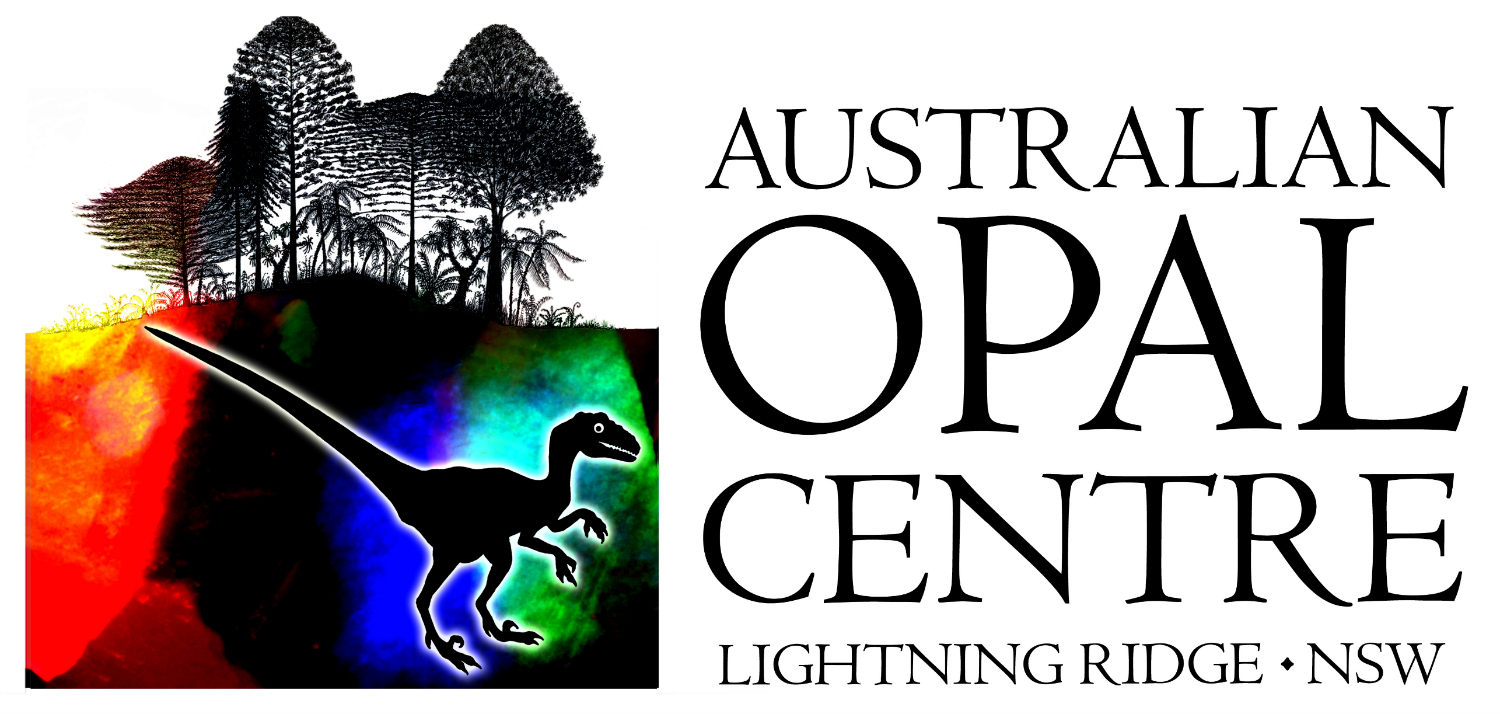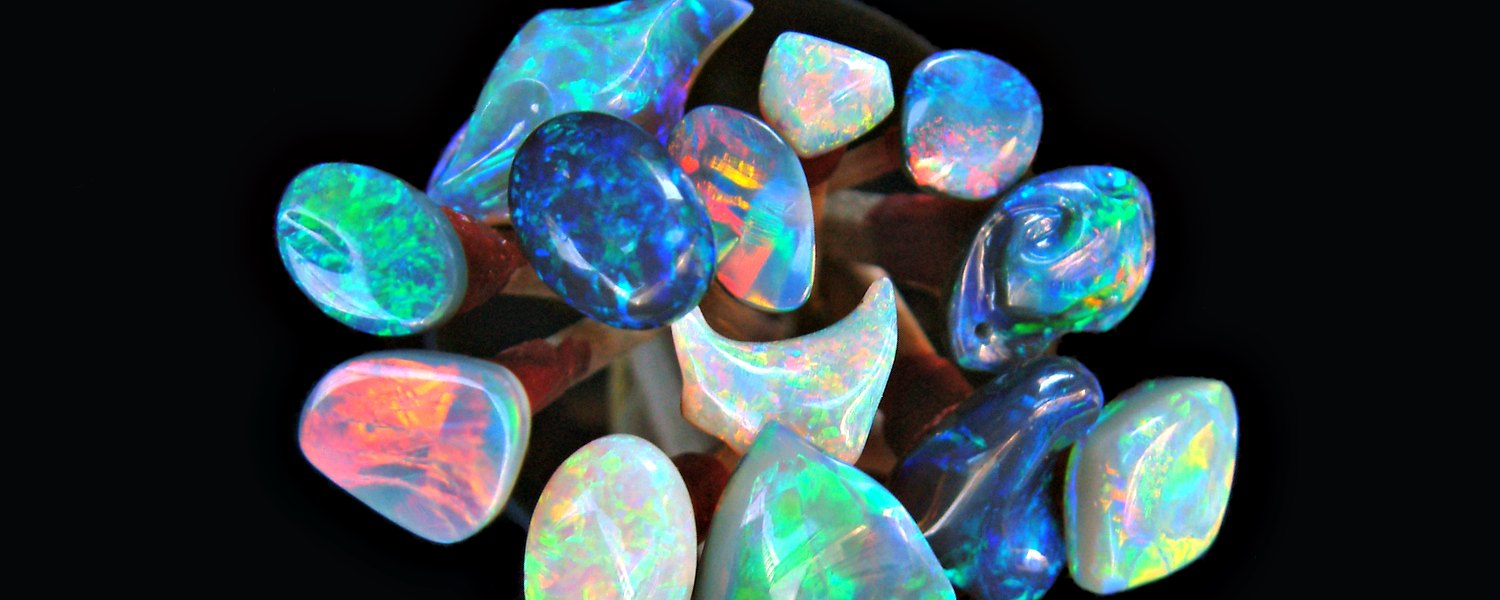Opal: Queen of Gems
Opal is the most magnificent of precious gemstones. It boasts every colour of the visible spectrum, from deepest and clearest blues and greens to rippling golden orange; through delicate pink and violet to rich turquoise, shocking vermilion, carmine and fuchsia - every colour imaginable.
An opal may contain any or all of these colours, arrayed in wondrous patterns with names like harlequin, pinfire, Chinese writing, flower garden, mackerel sky, flagstone and rolling flash. Like all fine things, gem opal is exceedingly rare.
Much of the world’s precious opal is mined in the harsh outback of Australia, where a unique combination of geological conditions permitted the formation of opal near the margins of an ancient inland sea. Australia is regarded as the world's leading source of opal and of the world's finest opal. In 1994, opal was declared Australia’s National Gemstone.
Opal is found in several other countries including Brazil, Mexico, Ethiopia, the United States, Canada, Peru, Indonesia, Honduras, Slovakia and the Czech Republic. Each location produces a distinctive opal type; in the future, we will add photos and information about these to the Australian Opal Centre website.
Colour and Formation
What gives opal its colour?
Opal is made of tiny spheres of silica dioxide - spheres so tiny they can only be seen using an electron microscope.
In precious opal – the name given to opal with spectral colours, or 'play of colour' – the tiny spheres of silica dioxide are uniform in size and stacked in regular rows and layers. This configuration creates lattices that diffract white light into different colours of the spectrum. The tiniest spheres produce violet-coloured opal; the largest, red, with sphere size increasing from the violet to the red end of the spectrum.
The great majority of opal does not show play of colour and is called common opal or potch. Common opal is typically grey, black, white or amber-coloured, but is also found in other hues. Common opal does contain tiny balls of silica dioxide, but they are irregular in shape, size and/or arrangement.
How does opal form?
Opal forms after water containing dissolved silica seeps into openings and cavities in rock or clay, then as the water slowly dries out, microscopic spheres of silica dioxide begin to form. The combination of pH and other chemical conditions required for opal formation is extremely specific and occurs only rarely in nature.
Cost and Rarity
Why is opal so expensive?
Opal is a precious gemstone, like rubies, emeralds or diamonds. Opal is rare, and it is expensive to prospect and mine for. Dozens of miners can work for months, using expensive machinery and spending tens of thousands of dollars on fuel, and between them find only a single fine opal, or perhaps a few. So high-quality opal is costly and in fact, should be valued more highly than it is!
Remember, though – not all opal is expensive: there’s an opal for everyone. If you can afford to own a phone or a car, or even to buy a hamburger, you can afford an opal.
How rare is opal?
Silica is one of the most common minerals on the planet, but precious opal is very rare – far more rare than diamonds. Precious opal is rare because the natural processes that create it rarely occur.
Most (at least 95%) of the opal found by miners is common opal without gem colour. In Australia we call it potch. It can be white, grey, black or amber coloured. Even when a miner finds gem-coloured opal, most of it can’t be cut into gemstones because it’s too thin, or sandy.
Types of Opals
What is black opal?
Black opal is the most rare and highly valued form of opal, and has what is called a black (or dark) body tone. Black opals come in every colour of the rainbow. Their dark body tone makes the colours on the face of the opal appear rich and intense.
If you ignore the colour in an opal, how dark is it? If it is black or near-black, it is called a black opal. Opal with a dark, but not black, body tone, is referred to as dark opal.
What is light opal?
Light opal is opal with a light body tone. The colours in precious light opal have a beautiful soft, pastel quality. The lightest of light opal is also sometimes called white or milky opal.
What is crystal opal?
Crystal opal is translucent: if you hold it up to the light, some light will pass through. It doesn’t have a crystalline structure like amethyst or diamond – it’s called ‘crystal’ simply because its translucency or transparency resembles that of crystalline materials such rock crystal or glass.
When you look at Australian crystal opal with a light shining through from behind, the body of the opal takes on a warm orange colour.
Although most crystal opal has a light body tone, sometimes it can be as dark as black opal. In that case, it is called Black Crystal.
What is boulder opal?
Boulder opal is opal cut with a natural backing of host rock. The best-known boulder opal is from Western Queensland, where the opal forms in cavities within a brown-coloured, iron-rich rock called ironstone.
If the opal is in a thin layer on dark ironstone, it looks rich in colour and dark in body tone, like black opal. Sometimes opal is distributed in thin, irregular veins throughout the ironstone. This is called boulder matrix.
Boulder opal country also produces thicker ‘pipes’ of crystal opal, formed when the opal infilled cylindrical cavities left by burrowing invertebrate animals, tree roots or fallen branches.
Why is potch called opal?
Potch is opal; it is exactly the same mineral – microscopic spheres of silica dioxide. The only difference is that in potch, the tiny spheres are jumbled, whereas in precious opal they’re all laid out evenly, stacked like oranges in a crate.
Indigenous connection
Did the Aboriginal people know about opal?
Yes, Aboriginal people were undoubtedly the first finders or opal and there are Dreamtime stories that talk about the creation of opal.
The Australian Opal Centre recognises and acknowledges the traditional custodians of this land, and wishes to pay respects to the Elders, past and present of the Gamilaraay / Yuwaalaraay / Yuawaalayaay nations. It also extends its utmost respects to all other Indigenous nations.
In modern times at Lightning Ridge, opal mining gave Aboriginal people the opportunity to earn a decent living during a time when that was very difficult anywhere else. There are many successful Aboriginal miners and mining families in Lightning Ridge.
Valuing Opal
How do you value opal?
The basic unit of valuation is the same as for other gemstones – a weight unit called a carat – opals are priced per carat. (One carat equals 1/5 of a gram.)
The price of opal per carat is determined by a combination of factors:
- Brightness - brightest is best
- Colour - purple is the most common colour, then blue, then green, through gold then orange to red, which is the most rare and therefore valued most highly
- Pattern - some patterns, like Chinese Writing or Harlequin, are more rare than others, like Pinfire
- Body tone - the body tone is the darkness of the opal if you ignore its colour; other factors being equal, the darker the body tone, the more rare and therefore more valuable the opal
- Consistency - an opal that looks bright and beautiful from all directions is valued more highly than one that looks fantastic when held in one position, but dull in another position
Other factors include imperfections such as sand or potch showing on the face of the opal.
Generally speaking, the rarer the combination of features possessed by a precious opal, the more highly it is valued. Like fine art, or fine wine, or other fine jewels, the final price may also be influenced by personal taste and market conditions.
Want to learn more about opal right at its source? Contact us if you would like to join the mailing list for the Australian Opal Centre's upcoming Practical Opal Studies courses.

